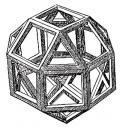Disgust
From The Art and Popular Culture Encyclopedia

Illustration: The Bitter Potion (c. 1635) by Adriaen Brouwer
|
"The art of procreation and the members employed therein are so repulsive, that if it were not for the beauty of the faces and the adornments of the actors and the pent-up impulse, nature would lose the human species."--The Notebooks of Leonardo Da Vinci "I could see the dark side of this ethic too: once you allow visceral feelings of disgust to guide your conception of what God wants, then minorities who trigger even a hint of disgust in the majority (such as homosexuals or obese people) can be ostracized and treated cruelly. The ethic of divinity is sometimes incompatible with compassion, egalitarianism, and basic human rights." Footnote: "Martha Nussbaum (2004) has made this case powerfully, in an extended argument with Leon Kass, beginning with Kass 1997." "Nothing is really beautiful but that which cannot be made use of; everything that is useful is ugly, for it is the expression of some need, and the needs of man are vile and disgusting, like his poor, weak nature.--The most useful part of a house is the privy."--Mademoiselle de Maupin (1835) by Théophile Gautier |
|
Related e |
|
Featured: |
Disgust is an emotion that is typically associated with things that are perceived as unclean, inedible, or infectious. In The Expression of the Emotions in Man and Animals, Charles Darwin wrote that disgust refers to something revolting. Primarily in relation to the sense of taste, as actually perceived or vividly imagined; and secondarily to anything which causes a similar feeling, through the sense of smell, touch, and even of eyesight. Disgust is one of the basic emotions of Robert Plutchik's theory of emotions.
Disgust may be further subdivided into physical disgust, associated with physical or metaphorical uncleanness, and moral disgust, a similar feeling related to courses of action.
Disgust is one of the basic emotions of Robert Plutchik's theory of emotions and has been studied extensively by Paul Rozin. It invokes a characteristic facial expression, one of Paul Ekman's six universal facial expressions of emotion. Unlike the emotions of fear, anger, and sadness, disgust is associated with a decrease in heart rate.
Contents |
Etymology
Disgust and shame
Martha Nussbaum, a leading American philosopher, wrote a book published in 2004 entitled Hiding From Humanity: Disgust, Shame, and the Law which examines the relationship of disgust and shame to a society's laws.
A recent study found that women and children were more sensitive to disgust than men. Researchers attempted to explain this finding in evolutionary terms. While some find wisdom in adhering to one's feelings of disgust, some scientists have asserted that "reactions of disgust are often built upon prejudices that should be challenged and rebutted."
Perception of disgust
Huntington's disease
Many patients suffering from Huntington's disease, a genetically transmitted progressive neurodegenerative disease, are unable to recognize expressions of disgust in others and also don't show reactions of disgust to foul odors or tastes. The inability to recognize disgust in others appears in carriers of the Huntington gene already before the disease has broken out.
References
- The Anatomy of Disgust (1997) by William Ian Miller.
See also
- Affective neuroscience
- Amygdala
- Aversion therapy
- Cognitive neuroscience
- Contempt
- Fear
- Foodborne illness
- Menippean satire
- Nausea
- Papez Circuit
- Phobia
- Politics of disgust
- Projective disgust
- Social neuroscience
- Taboo

